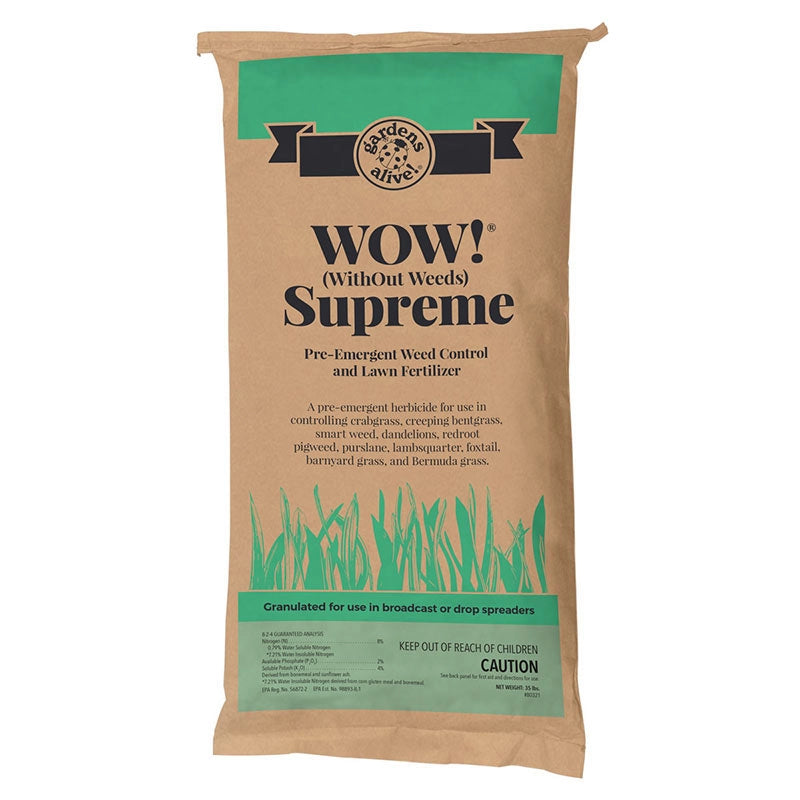Polish Off Your Poison Ivy Without Personal Peril With These Seven Secrets of Successful PI Pullers!
Q. Last year, we started having problems with poison ivy around our vegetable garden. I can't go near the stuff, so my father-in-law kindly mowed it down and covered the area with weed block and wood chips. The poison ivy simply grew up around it, and instead of being behind my garden, is now starting to encroach it. Do you have any organic suggestions for getting rid of it? Thanks for your help.
---Laurel DWG; Billerica, Massachusetts
One of our mulberry trees has a 4" thick poison ivy vine clinging to the bark and climbing the entire tree. It has beautiful foliage in the Fall, but my spouse is very allergic and I need to kill it off. Any suggestions?
---Terry Martin; Southeastern Michigan
Mike, it's that time of year again! I'm getting over my first poison ivy rash and a friend has a bad case just starting. Can you go over the details of your poison ivy plan?
---Elaine Wolf; Philadelphia
A. Yes, Elaine, it is indeed time for my annual lesson on rash-free removal! Laurel: Make sure your kind-but-somewhat-foolish Father-in-Law washes his lawn mower well; it's likely still covered with the stuff! (Yes, that would explain why he gets a rash every time he mows the lawn!) Clean all the parts that touched the poison vine really well with cold water. Then stop foolin' around and try…
Mike McGrath's Patented Poison Ivy Purging Plan!
To remove one from your trees, suit up and use a bow saw to cut through the vine about a foot above the soil line. Work carefully; you want to completely sever the vine, but cause the least damage to the tree trunk. When you're done, wash your blade in cold water. Then wipe it down with white vinegar, just to be super-safe. Then be patient. In a week or so, the leaves of the vine up in the tree should turn brown.
If you can do it safely, make another cut as high up as possible on the tree vine. Wait some more. Then, on a rainy day, suit up with heavy plastic bags (or a Tyvek protective suit) and slooowllly pull the dead vine out of the tree. Make sure you're completely covered with protection; these vines can really whip around and catch you by surprise. (If you DO get nailed, stop and immediately soak that spot with cold water for a good ten minutes.) Wrestle the vine into big plastic bags and put out with the trash. NEVER BURN POISON IVY! The smoke can be fatal!
Do not attempt to remove the part of the vine still attached to the tree by all those 'hairs'. If you think people might touch it, cover the vine with a clay spray, like Gardens Alive's "Surround at Home". Or spray paint it bright red. Or both—clay first; then paint. Over time the vine will decay; but beware—the trunk will stay 'active' where that vine was attached for years.
Spray vinegar or iron or another organic herbicide on any new growth that tries to come up out of the ground where the original vine emerged.
And, finally, if you're not sure what it looks like, go to poison dash ivy dot org for great photos of the nasty stuff in all of its guises!
---Laurel DWG; Billerica, Massachusetts
One of our mulberry trees has a 4" thick poison ivy vine clinging to the bark and climbing the entire tree. It has beautiful foliage in the Fall, but my spouse is very allergic and I need to kill it off. Any suggestions?
---Terry Martin; Southeastern Michigan
Mike, it's that time of year again! I'm getting over my first poison ivy rash and a friend has a bad case just starting. Can you go over the details of your poison ivy plan?
---Elaine Wolf; Philadelphia
A. Yes, Elaine, it is indeed time for my annual lesson on rash-free removal! Laurel: Make sure your kind-but-somewhat-foolish Father-in-Law washes his lawn mower well; it's likely still covered with the stuff! (Yes, that would explain why he gets a rash every time he mows the lawn!) Clean all the parts that touched the poison vine really well with cold water. Then stop foolin' around and try…
Mike McGrath's Patented Poison Ivy Purging Plan!
- • Wait until right after (or even better, DURING) a heavy rain. Or soak the area THOROUGHLY with a hose or sprinkler. Weeds in wet soil pull out much easier than from dry.
• Put on heavy boots, protective goggles, long pants and shirt. (But no gloves!) Then get a helper who will work at your side, and do The Plastic Bag Dance…
• The PBD: Gather up lots of big, heavy plastic mall shopping bags; not the thinner supermarket varieties—we want bags from real classy stores here. Slip a bag over each hand, locate where a vine enters the soil and pull s-l-o-o-o-o-w-l-y with one of your bagged hands; the vine should come right up for you. If it resists, have your helper soak the soil around the base of the vine with a garden hose. Don't YOU (the puller) touch ANYTHING—especially your face! When you get the root (or the vine finally snaps), fold the bag in your other hand back over the ivy, and then drop the vine and both the bags that are now around it into a trashcan. Don't re-use your 'hand bags'; start with fresh ones every time.
• When you're finished, have your helper open all doors for you. Then go straight to the washer, and put all your clothes in the wash (by themselves) and run them thru a cold water cycle. Then you get right in the shower and wash with cool water. No soap; no washcloth. Water dissolves the allergenic oil; soap and cloth can spread it to other, perhaps more sensitive, areas. Yes, exactly the areas you're thinking about now—so don't cheat! THEN take a regular shower.
• Next day, go back to where any roots escaped and either:
   a. Suit up, bag up, excavate the area with a shovel and get them (perhaps GIANT) roots out of the ground; or
   b. 'Mulch' those spots with heavy carpet, metal sheeting, or something equally impenetrable.
• Then pay close attention to the areas you've eliminated. Immediately pull any new sprouts (again, using bags—NEVER gloves!) or spray them with herbicidal soap, a vinegar-based organic herbicide or one of the new non-toxic herbicides whose active ingredient is iron. Then keep an eye out for new plants sprouting up—thanks to the birds that love to eat the pretty berries that form on wild vines, there will always be fresh vines for you to pull.
To remove one from your trees, suit up and use a bow saw to cut through the vine about a foot above the soil line. Work carefully; you want to completely sever the vine, but cause the least damage to the tree trunk. When you're done, wash your blade in cold water. Then wipe it down with white vinegar, just to be super-safe. Then be patient. In a week or so, the leaves of the vine up in the tree should turn brown.
If you can do it safely, make another cut as high up as possible on the tree vine. Wait some more. Then, on a rainy day, suit up with heavy plastic bags (or a Tyvek protective suit) and slooowllly pull the dead vine out of the tree. Make sure you're completely covered with protection; these vines can really whip around and catch you by surprise. (If you DO get nailed, stop and immediately soak that spot with cold water for a good ten minutes.) Wrestle the vine into big plastic bags and put out with the trash. NEVER BURN POISON IVY! The smoke can be fatal!
Do not attempt to remove the part of the vine still attached to the tree by all those 'hairs'. If you think people might touch it, cover the vine with a clay spray, like Gardens Alive's "Surround at Home". Or spray paint it bright red. Or both—clay first; then paint. Over time the vine will decay; but beware—the trunk will stay 'active' where that vine was attached for years.
Spray vinegar or iron or another organic herbicide on any new growth that tries to come up out of the ground where the original vine emerged.
And, finally, if you're not sure what it looks like, go to poison dash ivy dot org for great photos of the nasty stuff in all of its guises!


